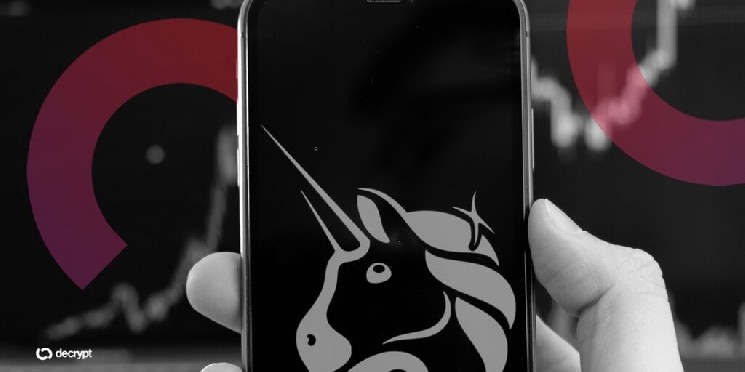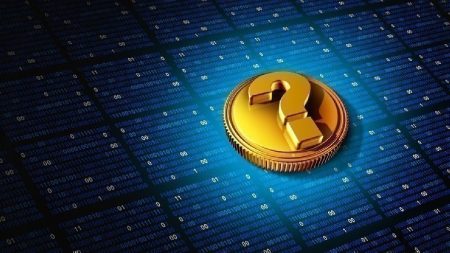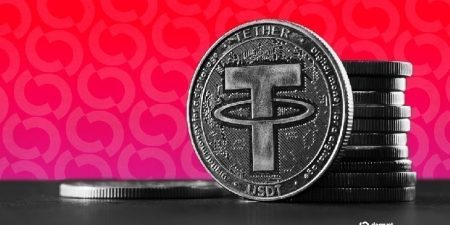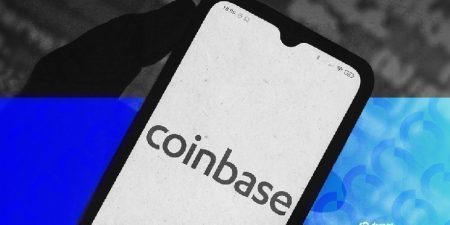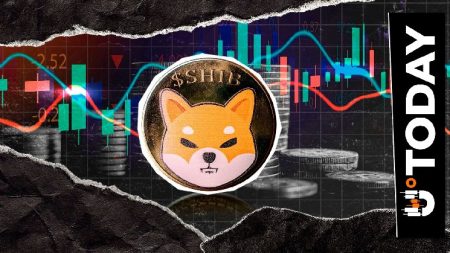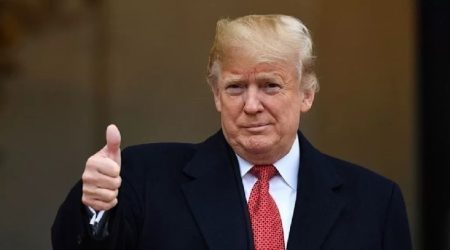Uniswap Token Surges as “UNIfication” Proposal Promises to Transform DeFi Economics
Decentralized Exchange Powerhouse Unveils Sweeping Changes to Boost Value and Liquidity
In a dramatic market development sending ripples throughout the cryptocurrency ecosystem, Uniswap’s native token (UNI) has surged to impressive heights this week, substantially outperforming major cryptocurrencies amid anticipation of transformative protocol changes. The rally comes following the announcement of an ambitious “UNIfication” proposal designed to leverage the platform’s massive trading volume, implement token burning mechanisms, and fundamentally restructure the economics of one of decentralized finance’s cornerstone protocols.
The comprehensive proposal, jointly unveiled by Uniswap Labs and the Uniswap Foundation on Monday, aims to capitalize on the exchange’s approximately $650 million in daily trading activity by activating protocol fees that will fund a perpetual UNI token burn program. This strategic maneuver has captured widespread attention from investors and DeFi enthusiasts alike, propelling UNI to remarkable gains of 41.5% over the past 24 hours and an even more substantial 83% increase over the week, according to data from CoinGecko. The token burning mechanism, which permanently removes tokens from circulation, stands to create meaningful scarcity in the UNI supply—potentially enhancing value for token holders in a market that has long sought mechanisms to translate Uniswap’s operational success into tangible stakeholder benefits.
“Uniswap is the largest and the original spot DEX since 2018, generating more than $1 billion in fees annually, but there has not been a mechanism to pass that value to token holders,” explained Peter Chung, head of research at quantitative trading firm Presto, in an interview. “This proposal, if implemented, will change that.” The scale of Uniswap’s economic activity underscores the potential impact of these changes: over the past month alone, the protocol has accumulated $222 million in fees according to DefiLlama data, projecting to an annualized fee generation exceeding $2 billion. Even more impressively, the platform’s cumulative lifetime fee generation stands at $5.4 billion, surpassing its total value locked of $5 billion—a testament to the protocol’s efficiency and market dominance in the decentralized exchange sector.
Historic Token Burn and Strategic Repositioning Signal New Era for DeFi Leader
The UNIfication proposal’s scope extends well beyond token economics, representing a comprehensive reimagining of how the protocol operates and generates value. Perhaps most notably, the plan calls for the retroactive burning of approximately 100 million UNI tokens from the treasury, calculated from the exchange’s inception—a move that represents one of the largest token burns in DeFi history. This backward-looking approach emphasizes the team’s commitment to rewarding the ecosystem’s historical growth while establishing new forward-looking mechanisms. The proposal introduces several additional strategic initiatives, including Protocol Fee Discount Auctions designed for Maximal Extractable Value (MEV) internalization and a significant pivot toward core protocol growth by eliminating fees for Uniswap Labs’ front-end interface, wallet, and API services.
In what may prove to be one of its most innovative aspects, the proposal outlines the development of “aggregator hooks” intended to transform Uniswap v4 into an onchain aggregator capable of collecting fees on external liquidity. This technical evolution represents a significant expansion of Uniswap’s capability to capture value across the broader DeFi ecosystem, potentially positioning the protocol as not just a leading exchange but as essential infrastructure for decentralized trading across multiple platforms. “This proposal comes as DeFi reaches an inflection point,” wrote Uniswap founders Hayden Adams, Ken Ng, and Devin Walsh in the proposal. “Decentralized trading protocols are rivaling centralized platforms in performance and scale, tokens are going mainstream, and institutions are building on Uniswap and other DeFi protocols.”
Regulatory Clarity and Strategic Growth Initiatives Power Uniswap’s Bold Vision
The timing of this ambitious restructuring appears carefully calculated to capitalize on an evolving regulatory landscape that may prove more favorable to decentralized finance under the incoming Trump administration. Uniswap’s leadership specifically cited the resolution of previous legal challenges—in which the protocol had faced accusations of promoting questionable tokens and potentially violating the Securities Act—as creating the foundation for this new chapter of growth. This newfound regulatory clarity, combined with Uniswap’s established market position, creates a potentially opportune moment for such sweeping changes to the protocol’s economic model and strategic direction.
Beyond the technical and economic restructuring, the UNIfication proposal outlines an expansive growth strategy encompassing builder programs, grants, incentives, strategic partnerships, mergers and acquisitions, venture investments, institutional onboarding, and exploratory “moonshot efforts” to unlock new value streams for the broader Uniswap ecosystem. “Labs will also accelerate growth through builder programs, grants, incentives, partnerships, M&A, venture, onboarding institutions, and exploring moonshot efforts to unlock new value for the Uniswap ecosystem,” the proposal states. This multifaceted approach reflects an understanding that maintaining Uniswap’s leadership position in an increasingly competitive DeFi landscape will require not just economic optimization but also continued innovation and ecosystem development across multiple fronts.
Aligning Incentives in a Maturing DeFi Landscape
The UNIfication proposal represents more than just technical adjustments to Uniswap’s operations—it signals a profound evolution in how decentralized protocols approach value creation and distribution in an increasingly mature market. According to the proposal’s authors, the initiative fundamentally “aligns incentives across the Uniswap ecosystem,” addressing one of the persistent challenges in decentralized governance: ensuring that protocol success translates directly to stakeholder benefits. By implementing a token burning mechanism funded by protocol fees, Uniswap creates a direct relationship between platform activity and token value, potentially establishing a new standard for how successful DeFi protocols distribute value.
Market analysts have noted that Uniswap’s fee generation capacity—now projected at over $2 billion annually—places it in a category with some of traditional finance’s most successful exchanges, despite operating with a fraction of the staff and infrastructure costs. This efficiency, combined with the protocol’s growing liquidity and expanding feature set, positions Uniswap as a potential bridge between traditional financial institutions and the decentralized ecosystem as institutional adoption continues to accelerate. As decentralized exchanges increasingly compete with centralized platforms on performance, security, and feature parity, Uniswap’s bold economic restructuring may prove timely in securing its position as the flagship protocol connecting traditional finance to the expanding world of decentralized markets. For token holders who have long awaited mechanisms to capture the value generated by Uniswap’s operational success, the UNIfication proposal represents a watershed moment in the evolution of decentralized exchange economics.
The Future of Decentralized Exchange in an Evolving Market
As markets digest the implications of Uniswap’s sweeping proposal, the broader DeFi ecosystem will be watching closely to see how these changes affect not just UNI token performance but also trading dynamics, liquidity provision, and competitive positioning among decentralized exchanges. The UNIfication initiative arrives at a critical juncture for decentralized finance, with total value locked across the sector showing signs of recovery after extended market downturns and with institutional interest steadily growing amid improving technological infrastructure and potential regulatory clarity.
For Uniswap, which has maintained its position as the leading decentralized exchange despite numerous competitors and technological shifts, the UNIfication proposal represents both an assertion of market leadership and an acknowledgment that continued innovation remains essential. By restructuring its economic model while simultaneously expanding its technical capabilities and strategic initiatives, Uniswap is making a comprehensive bid to transform from a successful DeFi protocol into an enduring financial infrastructure layer. As token holders celebrate the immediate market response to these announcements, the true test of the UNIfication proposal will lie in its long-term impact on Uniswap’s market position, developer ecosystem, and ability to continue pioneering new approaches to decentralized exchange in an increasingly competitive landscape.





